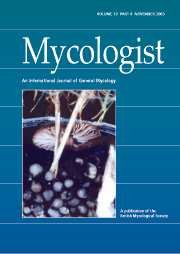Article contents
Endoparasites of soil nematodes and rotifers 1: the common and the rare
Published online by Cambridge University Press: 05 May 2004
Abstract
Free-living nematodes, commonly known as eelworms, eat bacteria in the soil and may succumb to infection by delicate endoparasitic fungi. In the wild these fungi are host-dependent and infect nematodes with small unicellular spores that either lodge inside the nematode following ingestion, or adhere to the nematode cuticle. Some endoparasites, such as Drechmeria coniospora and Harposporium leptospira, are readily isolated, ubiquitous species, infecting common soil nematodes in a variety of substrates. Others, like the elusive Plesiospora globosa, are seldom seen because they are host-specific for rarer species of nematode occurring in specific habitats.
- Type
- Original Article
- Information
- Copyright
- © 2003 Cambridge University Press
- 2
- Cited by




